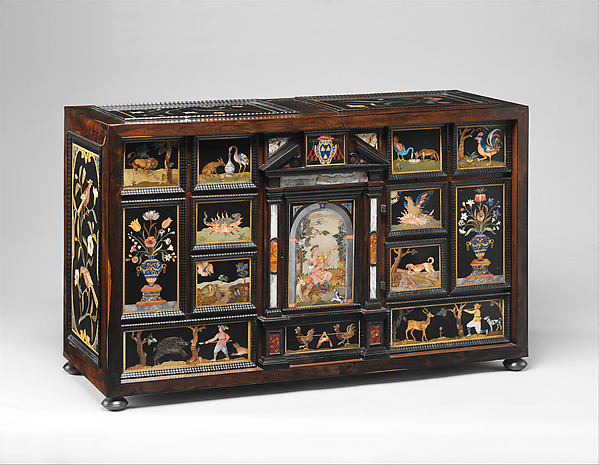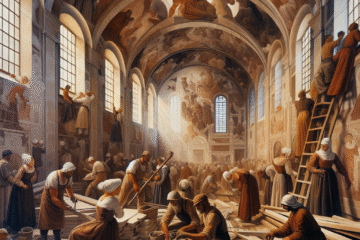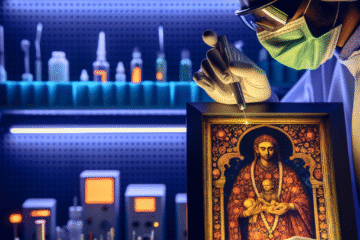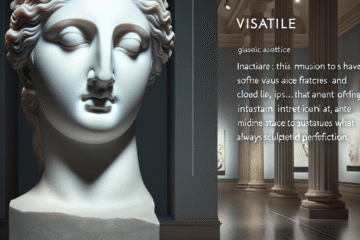
Image title: Barberini Cabinet
Medium: Oak and poplar veneered with various exotic hardwoods, with ebony moldings and plaques of marble, slate (paragon); pietre dure work consisting of colored marbles, rock crystal, and various hardstones
Date: ca. 1606–23
Source:
The Met Collection
“
When in doubt, don’t.
”
— Benjamin Franklin
When Marble Lies: Propaganda in Classical Sculpture
Introduction: The Silent Power of Stone
Walk into any classical museum, and you’re sure to encounter the stern, serene faces of Roman emperors carved in marble—eyes eternal, cheekbones perfect, expressions aloof or benevolent. These busts, so often presented as neutral historical records, are anything but. They are sculpted myths, biographies told in stone to persuade and dominate. In this article, we unravel the political machinery behind classical sculpture, tracing how Roman art blurred the line between aesthetic form and imperial propaganda.
Chapter I: Republican Ideals and the Rise of Verism
Before Caesar crossed the Rubicon, Roman portraiture adhered to a style known as verism—an exaggerated form of realism. Wrinkles were deepened, jowls sagged, and every flaw was carved unflinchingly. This stylistic choice reflected the Republic’s values: gravitas, wisdom, and the hard-earned authority of age. Such likenesses didn’t flatter; they functioned politically, portraying senators and magistrates as embodiments of Roman stoicism and public virtue. Here, truth was a tool of political branding in its own right.
Chapter II: The Augustan Revolution in Stone
Augustus, Rome’s first emperor, redefined everything—including how emperors should look. Breaking with the veristic tradition, he opted for idealized youthfulness, aligning his public image with that of the Classical Greek gods. His marble likenesses consistently portray him not as he was, but as he wished to appear: calm, firm-jawed, eternally young. This pivot marked a critical point in Roman sculptural propaganda. Augustus knew that if he could look like a god, he could rule like one—thus inaugurating centuries of strategic myth-making in marble.
Chapter III: Divine Flesh—Sculpting the Imperial Cult
As the imperial system matured, emperors were increasingly deified, both during and after their lifetimes. Sculpture became a key medium for this elevation. Busts and full-body statues housed in temples or public squares functioned as idols of state ideology. The emperor wasn’t just a man; he was divine policy personified. Artistic idealization smoothed flaws, erased history, and sanctified presence. This mythical image, distributed throughout the empire, reinforced political unity in the absence of modern mass communication.
Chapter IV: Crisis and Decline—Shifting Styles in a Fragmenting Empire
By the third century CE, Rome faced mounting crises—political instability, economic decline, and barbarian pressure. The art of this era reveals a stylistic shift: busts grew more abstract, less refined, almost Gothic. Yet even this stark turn served political purposes. Emperors like Diocletian and Constantine adopted more rigid and hieratic styles that emphasized authority over approachability. The message was no longer seduction through beauty, but awe through austerity. It was still propaganda—adapted for a changed world where fear replaced reverence.
Chapter V: Philosophical Foundations and Technological Mastery
Behind these transformations lay not only shifts in power but deeper philosophical and technological currents. Classical ideals from Greek philosophy—especially Platonic notions of ideal forms—influenced Roman beliefs about perfection and political representation. Technological advances in sculpting tools, stone sourcing, and workshop organization supported mass production of imperial images, ensuring consistent messaging across a vast empire. Even the very medium—marble—was chosen for its durability and association with purity, making the lies told in stone all the more enduring.
Conclusion: A Legacy Still Standing
Today, when we glance at a bust of Hadrian or Marcus Aurelius, we’re not just seeing an emperor—we’re witnessing centuries of calculated image-craft. These sculptures present not truth, but curated legends sculpted to reinforce imperial ideologies. As modern viewers, we must read them not only for their beauty but also for their bias. Marble may not blink, but it certainly speaks—and what it says is rarely the whole story.

Image description:
Ancient Roman marble bust of Germanicus in the Getty Museum
License:
CC0
Source:
Wikimedia Commons


